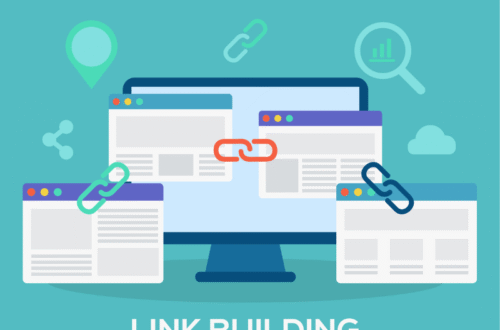In today’s competitive SEO landscape, getting high-quality backlinks is still one of the most effective ways to boost your site’s visibility in search engines. But not all backlinks are created equal. That’s where Web 2.0 backlinks come in—a completely free, beginner-friendly method to build authority and trust for your website.
If you’ve ever wondered how to rank better without spending a fortune on link building services, this guide is for you. Web 2.0 sites allow you to create your own mini blogs or content hubs on high-authority platforms like Medium, WordPress, and Blogger. These platforms let you drop a few strategic links back to your main website—earning you both SEO juice and visibility.
But not every Web 2.0 backlink will move the needle. If done incorrectly, it can even hurt your SEO. In this post, we’ll cover what Web 2.0s really are, how to build backlinks the right way, tips for avoiding mistakes, and a curated list of free high-authority platforms that allow DoFollow links.
1. What is Web 2.0?
Web 2.0 refers to websites that allow users to create, share, and manage content on their own. Unlike static websites, Web 2.0 platforms are interactive and user-focused. Popular platforms like Medium, Tumblr, and WordPress let you set up your own mini blog, publish content, and include backlinks to your main website.
Think of it as renting space on someone else’s powerful domain to promote your own content. These platforms often have high domain authority (DA), which means search engines trust them. When your site gets a backlink from such a trusted platform, that trust gets passed on—helping you rank higher.
Web 2.0s give you full control over the content, so you can optimize titles, use keywords naturally, and place links where they make the most sense. They’re also great for diversifying your backlink profile since the links come from different domains.
2. Are Web 2.0 Sites Good for SEO?
Yes, but only when done right. Web 2.0 backlinks can be very powerful because they come from high-authority domains, often with DoFollow attributes. Search engines look at those signals when deciding how trustworthy and relevant your content is.
The main benefit is control. Unlike guest posting or outreach where you depend on someone else’s platform, here you control the content, links, and anchor text. This gives you flexibility to create keyword-rich posts that naturally include links to your site.
That said, Google is getting smarter. Spammy Web 2.0 sites that look like link farms are quickly deindexed. So, simply dumping low-effort content and inserting links won’t work anymore.
Instead, treat each Web 2.0 property like a real website. Write valuable posts, add images, format your text properly, and make it user-friendly. A few high-quality Web 2.0 links are far better than dozens of low-quality ones.
3. How to Get Web 2.0 Backlinks
Building Web 2.0 backlinks is fairly simple, but requires effort and consistency. Start by identifying high-DA platforms that allow user-generated content and permit DoFollow links. Examples include Medium, Blogger, and WordPress.com.
Create an account and set up a blog. Choose a name relevant to your niche and write a compelling description. Make it look like a real blog—not a backlink farm.
Now, start publishing posts. Aim for high-quality, unique content with real value. Don’t write just for search engines; write to help readers. Add images, subheadings, bullet points—anything that makes your post more engaging.
4. Web 2.0 Backlink Tips
A. Make sure you:
- Use unique, original content. Copied articles from your main site won’t help.
- Format your posts well. Add headings, paragraphs, and multimedia.
- Stay niche-relevant. Your Web 2.0 blog should align with your main site’s topic.
- Use a mix of anchor texts (branded, naked URLs, and keyword-rich).
- Include outbound links to authority sites. This builds trust and reduces spam signals.
- Keep the blog active. Regular posts help your Web 2.0 property gain age and authority.
B. Try to avoid:
- Spamming with multiple links in every paragraph.
- Linking to too many sites—focus on your main one.
- Using spun or AI-generated content without editing.
- Over-optimizing anchor texts (avoid using exact-match keywords every time).
- Creating dozens of low-quality blogs and abandoning them.
When you take your time and treat each Web 2.0 site as a long-term asset, the backlinks you get can deliver real, lasting SEO value. Shortcuts might give a quick boost, but they often lead to penalties or loss of trust in the long run.
5. High-Authority, DoFollow Web 2.0 Sites List (FREE)
Below is a hand-picked list of trusted, free Web 2.0 sites that allow DoFollow links and have strong domain authority:
| Domain | Authority (DA) | Link Type |
|---|---|---|
| Angelfire.lycos.com | 92 | DoFollow |
| Blogger.com | 99 | DoFollow |
| Blogspot.com | 66 | DoFollow |
| Deviantart.com | 84 | DoFollow |
| Evernote.com | 92 | DoFollow |
| Goodreads.com | 93 | DoFollow |
| Hubpages.com | 91 | DoFollow |
| Instructables.com | 93 | DoFollow |
| Jimdo.com | 75 | DoFollow |
| Livejournal.com | 93 | DoFollow |
| Medium.com | 96 | DoFollow |
| Pen.io | 90 | DoFollow |
| Sites.google.com | 97 | DoFollow |
| Slashdot.org | 91 | DoFollow |
| Soup.io | 89 | DoFollow |
| Tumblr.com | 86 | DoFollow |
| Typepad.com | 83 | DoFollow |
| Webs.com | 90 | DoFollow |
| Weebly.com | 93 | DoFollow |
| Wikidot.com | 82 | DoFollow |
| Wix.com | 94 | DoFollow |
| WordPress.com | 92 | DoFollow |
| Xing.com | 92 | DoFollow |
| Zoho.com | 86 | DoFollow |





